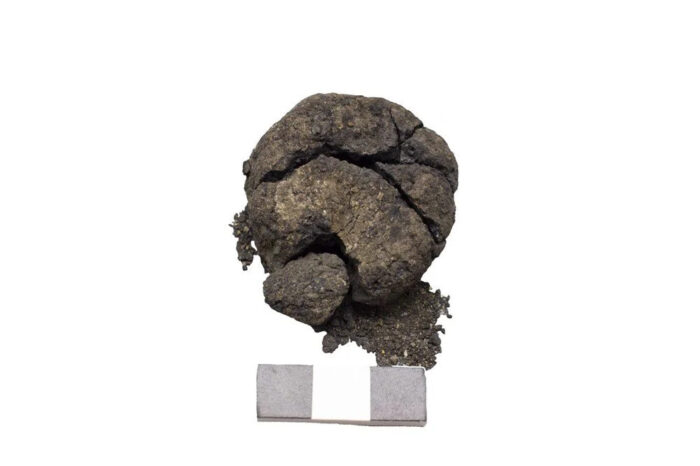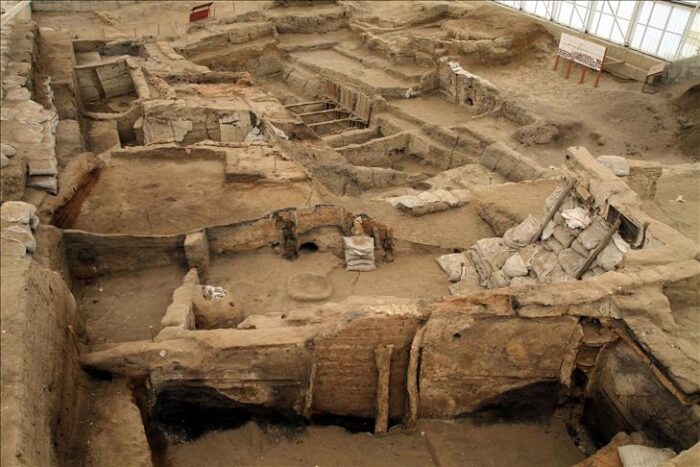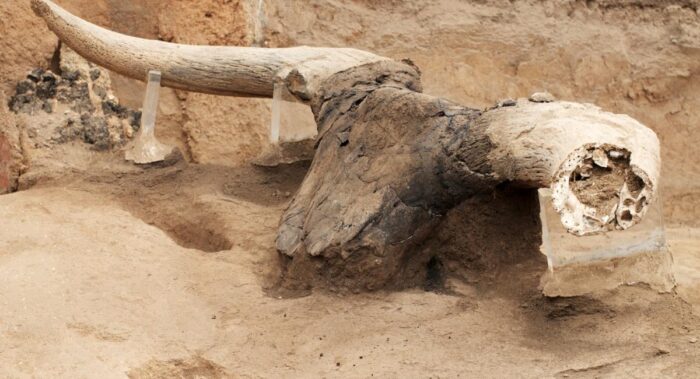Ever eat day-old bread? Try 3,147,760-day-old bread.
That’s what food archaeologists found in the ancient Turkish city of Çatalhöyük. The large-scale neolithic city is a UNESCO World Heritage Site, and home to at least one resident who left the loaf out longer than they probably meant to.
When a team excavating an area of the ancient city called Mekan 66 unearthed a partly destroyed oven, they found initially unidentifiable remnants inside. After a radiocarbon sniff test, the loaf turned out to be several thousand years past fresh.
Research at the Necmettin Erbakan University Science and Technology Research and Application Center (BITAM) dated the blackened material to 6600 B.C., according to Arkeonews.

Photo: AA news
“The small and round spongy find in the corner of the oven was found to be bread after careful documentation,” said Professor Ali Umut Turkcan, who led the excavation. “The fact that the structure was covered with a thin clay allowed all of these organic remains, both wooden and bread, to be preserved until today.”

Çatalhöyük. Photo: Creative Commons
Kitchens of the ancient bakers
Radiocarbon testing at the TUBITAK Marmara Research Center (MAM) in Gebze, Turkey, helped determine the age of the sample.
Turkcan’s team reportedly also found wheat, barley, and pea seeds at the site. It’s an episode in the growing field of food archaeology, which has found especially strong footing in Turkey. In 2021, excavations of 4,000-year-old grain silos revealed techniques the Hittites used to survive unpredictable rainfall. The 32 hermetically sealed chambers contained several hundred tons of cereal grain, according to the Archaeological Institute of America — enough to feed 20,000-30,000 people for a year.
The Çatalhöyük baker would have been feeding a smaller crowd. The central Anatolian city was large for its time, but only supported about 8,000 residents at its peak. And grain-based foods didn’t upstage every other dish. Domesticated cattle played a hugely important role in the city’s culture and economy. Wall- and platform-mounted bull skulls decorate multiple buildings.

Uncovered bulls head from the northeast platform in building 77 Photo: Jason Quinlan, Çatalhöyük Research Project
Ironically, the only reason the bread still exists at all is that the baker never finished the job.
“It hasn’t been baked in the oven but has fermented, preserving the starches,” Turkcan told Turkey’s Anadolu Ajansi news. “Such an example hasn’t existed until now.”
The Çatalhöyük bread joins several other examples of the world’s oldest bread. Arguably the world’s first bakers, members of a hunter-gatherer group called the Natufians, kneaded their first loaves in Jordan 14,000 years ago. A charred discovery in 2018 helped confirm their techniques — and offered evidence that baking predates agriculture.






